As the new year has already begun, Hearthstone offers yet another single-player experience with their fourth installation of Book of Heroes. This time around, players will be able to witness the life and death of Uther Lightbringer, one of the first paladins of Azeroth. For many lore experts, Uther is the most influential figure in Warcraft history, so let’s take a deep look into the life of the most famous warrior of the Holy Light!
Alonsus Faol
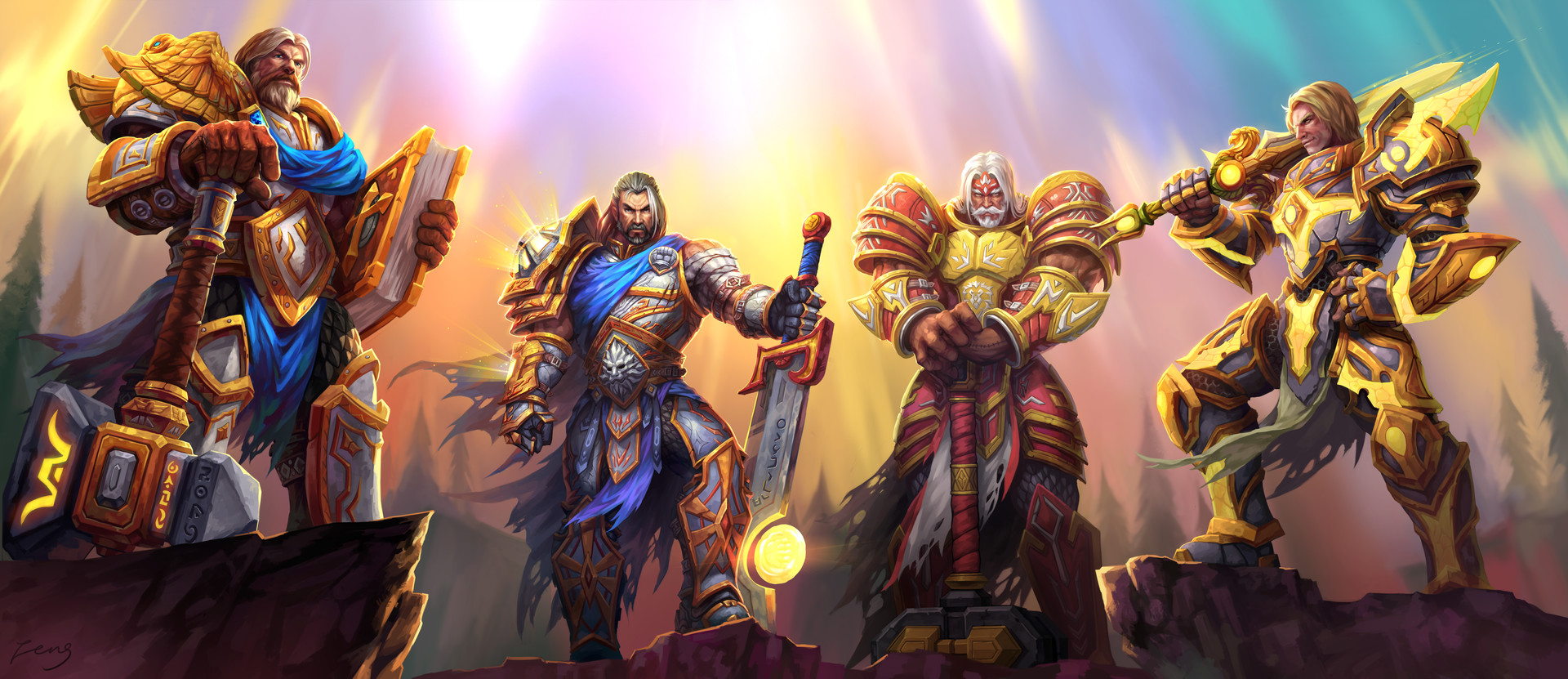
We don’t know too much about Uther’s early life. During early adulthood, as told by himself during the introduction, he was trained to become a cleric of the Church of the Holy Light. His mentor, Bishop Alonsus Faol, noticed his strong connection with the Light, Azeroth’s most prominent religious entity, from the very start of Uther’s training.
Meanwhile, an orc army has attacked Stormwind, and the capital of the Alliance eventually fell to the Horde.
The Alliance was in dire need of a holy force with a more military approach, Bishop Faol thought, and thus created the Knights of the Silver Hand, a group of the most passionate and well-trained devotees of the Holy Light. Eventually, he wanted Uther, his most talented student, to join the sacred elite order.
Orgrim Doomhammer
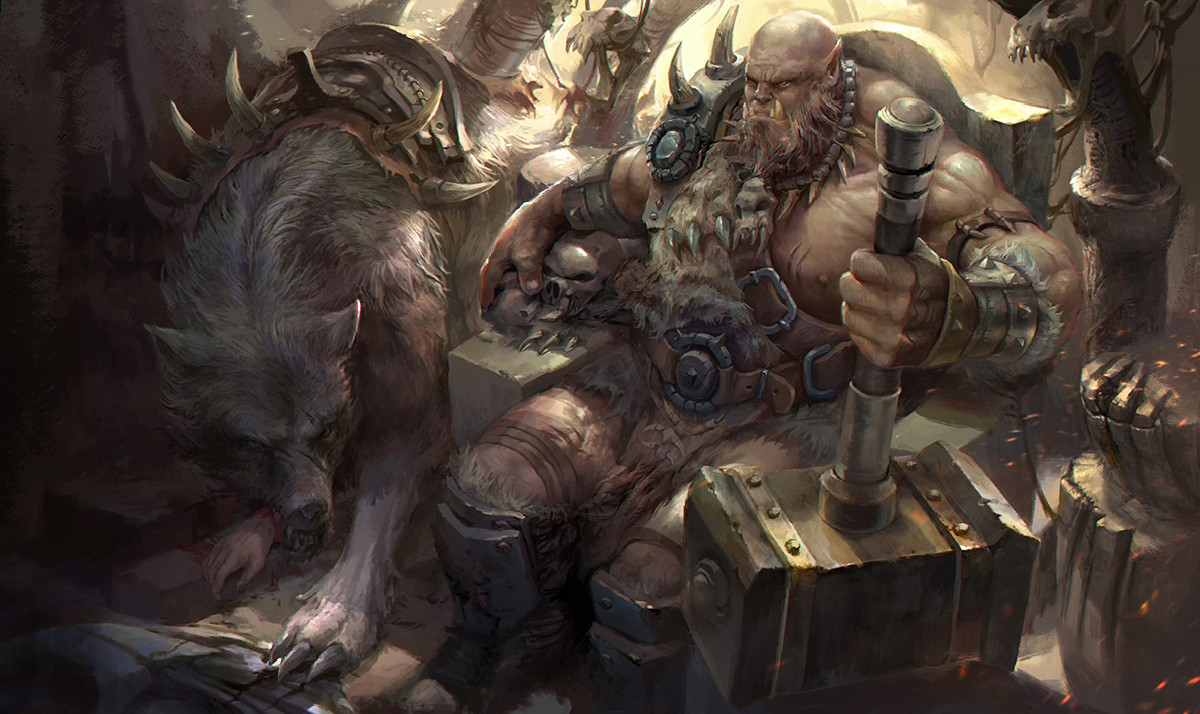
That is when the first paladins, Azeroth’s warriors of the Holy Light, were created. From there on, Uther carried a magical artifact, the Libram of Justice, as an idol for his order affiliation and as an identifying feature for his most developed character attribute.
And Justice was what needed to be served. After what happened in Stormwind, Uther did everything to defend Capital City, center of the kingdom of Lordaeron and his hometown, against Orgrim Doomhammer and his scavenging Horde.
Varok Saurfang

Thanks to the Light, and together with Turalyon, his trainee and paladin brother in arms, Uther was able to drive back the Horde. But the power of holy friendship wasn’t the only reason behind Uther’s victory at Capital City.
Gul’dan, the first warlock of the Horde and a powerful protagonist in Horde politics, left the orcish army the night before the siege. Driven by lust for power, the manipulative necromancer really just wanted to find the Eye of Sargeras, an insanely powerful demonic artifact created by the overlord of the Burning Legion Sargeras himself, and took his many loyal followers with him. Orgrim’s standing force was substantially weakened and stood no chance against the Alliance army, infused with power by the Knights of the Silver Hand.
But the Second War wasn’t over yet. The remaining orcs retreated to Blackrock Spire, a mountain fortress once created by the dark iron dwarves, and now home to the orcs and their black dragons …
The Dark Portal
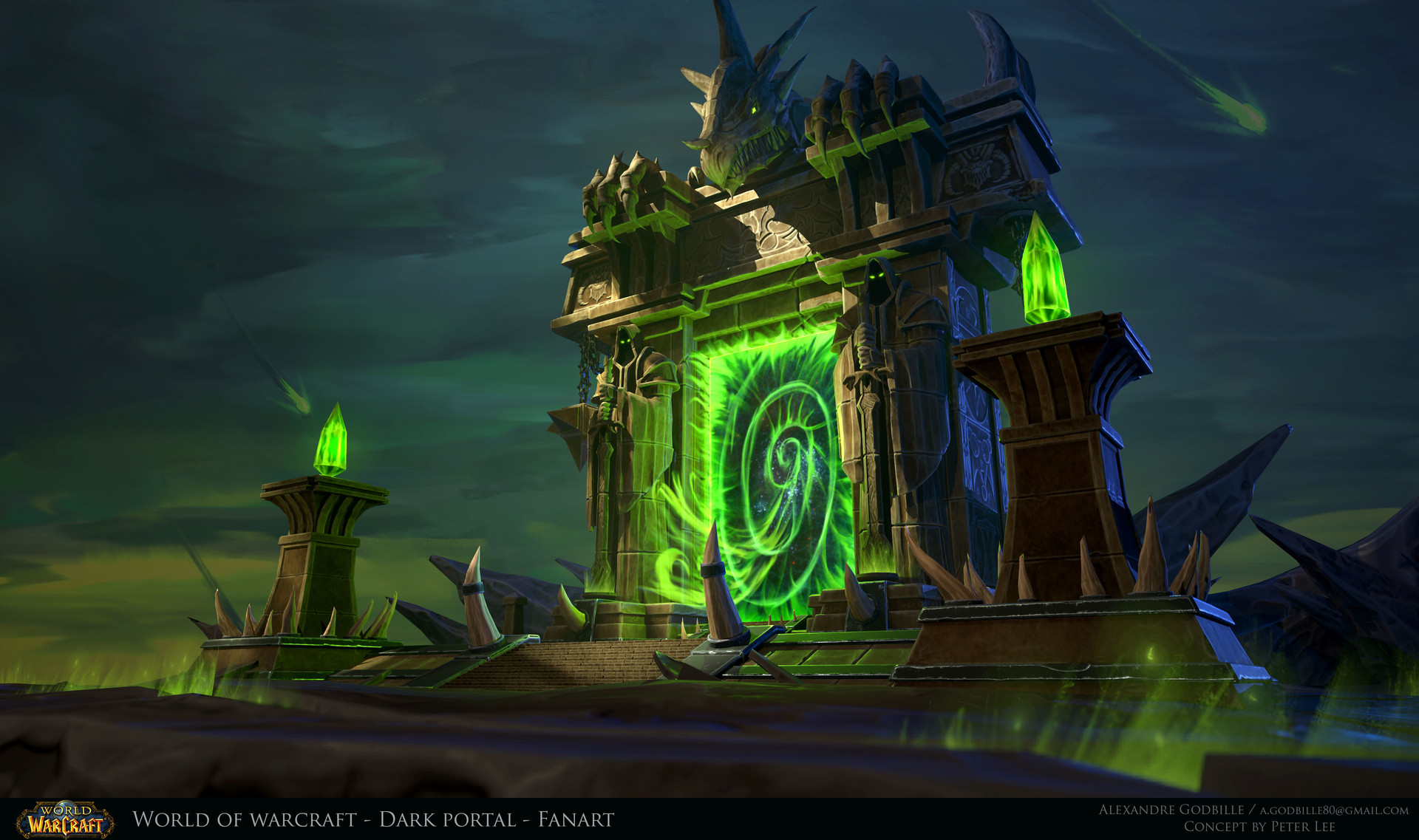
But even Orgrim’s right hand Varok Saurfang was no match for Uther’s unbroken conviction to defend his homeland.
The last step of Uther’s mission to rout the Horde forces was to seal the connection between Azeroth and Draenor, the homeland of the orcs and the Old Horde: the Dark Portal. This portal has been opened by Medivh and Gul’dan, both mind-controlled by Sargeras, the leader of the Burning Legion, who wanted Azeroth’s downfall more than anything. From there on, orcs swarmed through the portal to start the First War against Stormwind.
Together with Khadgar, a talented mage and once Medivh’s apprentice, Uther and the Knights of the Silver Hand had to succeed in closing the portal not only to end the Second War, but to protect Azeroth from the orcs and everything else that passed through it.
Blackrock Blademaster
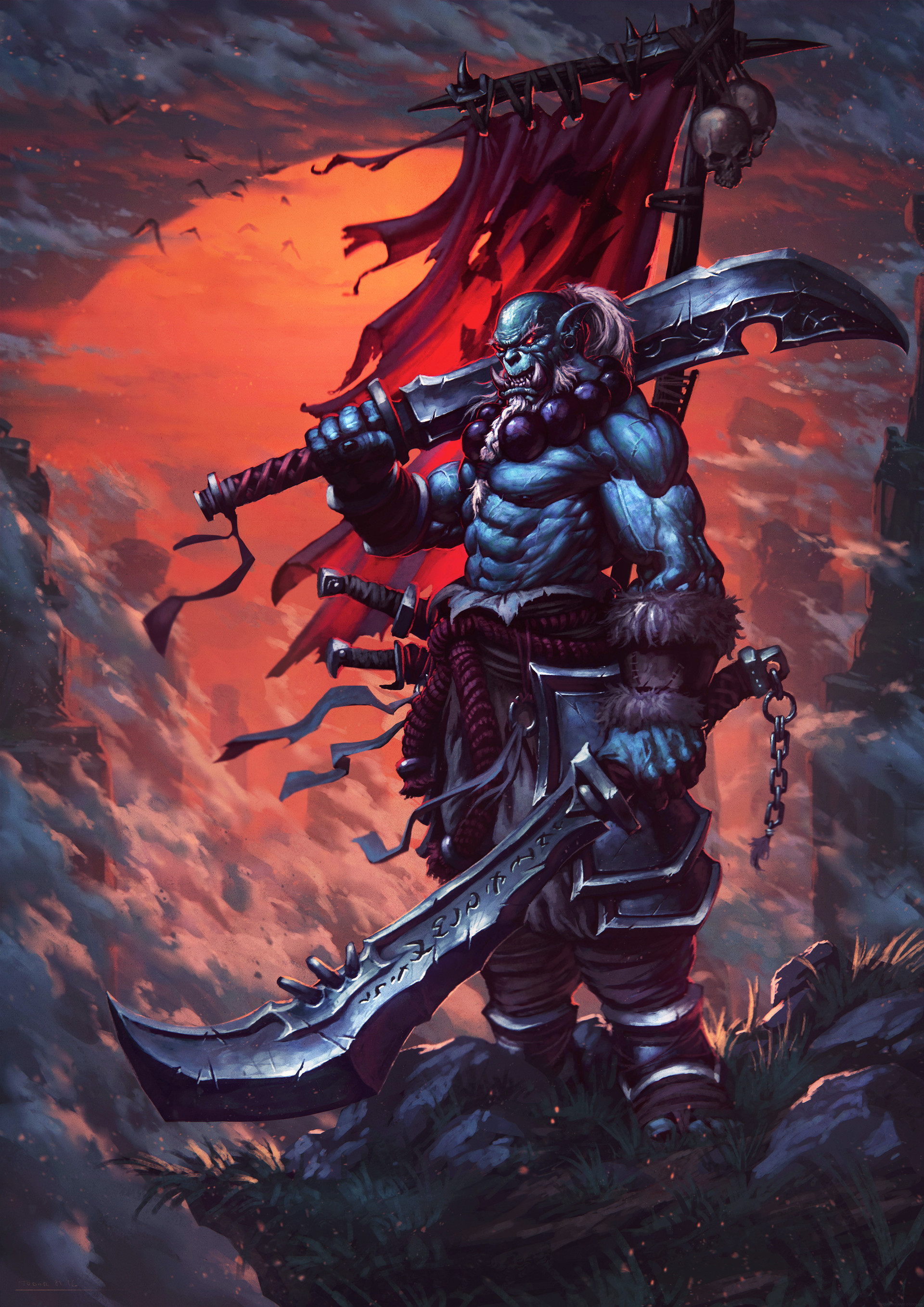
Yet again thanks to his unbending belief in the Light, Uther led the Alliance to victory against the orcs and the forces of the Burning Legion.
The Second War was over, and over the years, Uther’s tasks turned into ones of civil nature. He served as counsel to King Terenas, and eventually was chosen to train his son, Prince Arthas Menethil, to become a paladin of the Silver Hand.
In the meantime, the remaining orcs on Azeroth regained strength and started an attack against the Alliance foothold of Strahnbrad – so Uther together with Arthas went out once again to bring justice to the “green savages”.
Venim Iceblade

While fighting and eventually defeating the orc forces, Uther noticed that his student wasn’t able to control his emotions in the heat of battle. The young prince hated the orcs with a passion, and Uther’s compulsion to follow the principles of his order no matter what didn’t really help either.
However, Arthas’ lack of compassion was of reason: He knew that the orcs under Gul’dan were responsible for opening the Dark Portal and letting Sargeras’ demons into the world – into his world, into the kingdom he was bound to reign one day -, and he was scared to see history repeat itself.
Some time later, Arthas, now a full-grown paladin, travelled to Hearthglen, an Alliance town just north of Lordaeron, after receiving messages that it was attacked by the Scourge, a menacing force of undead.
After a young mage called Jaina Proudmoore briefed him about the dire situation in the fight for Hearthglen, Uther rushed to help his student against the overwhelming Scourge forces.
Mal’Ganis
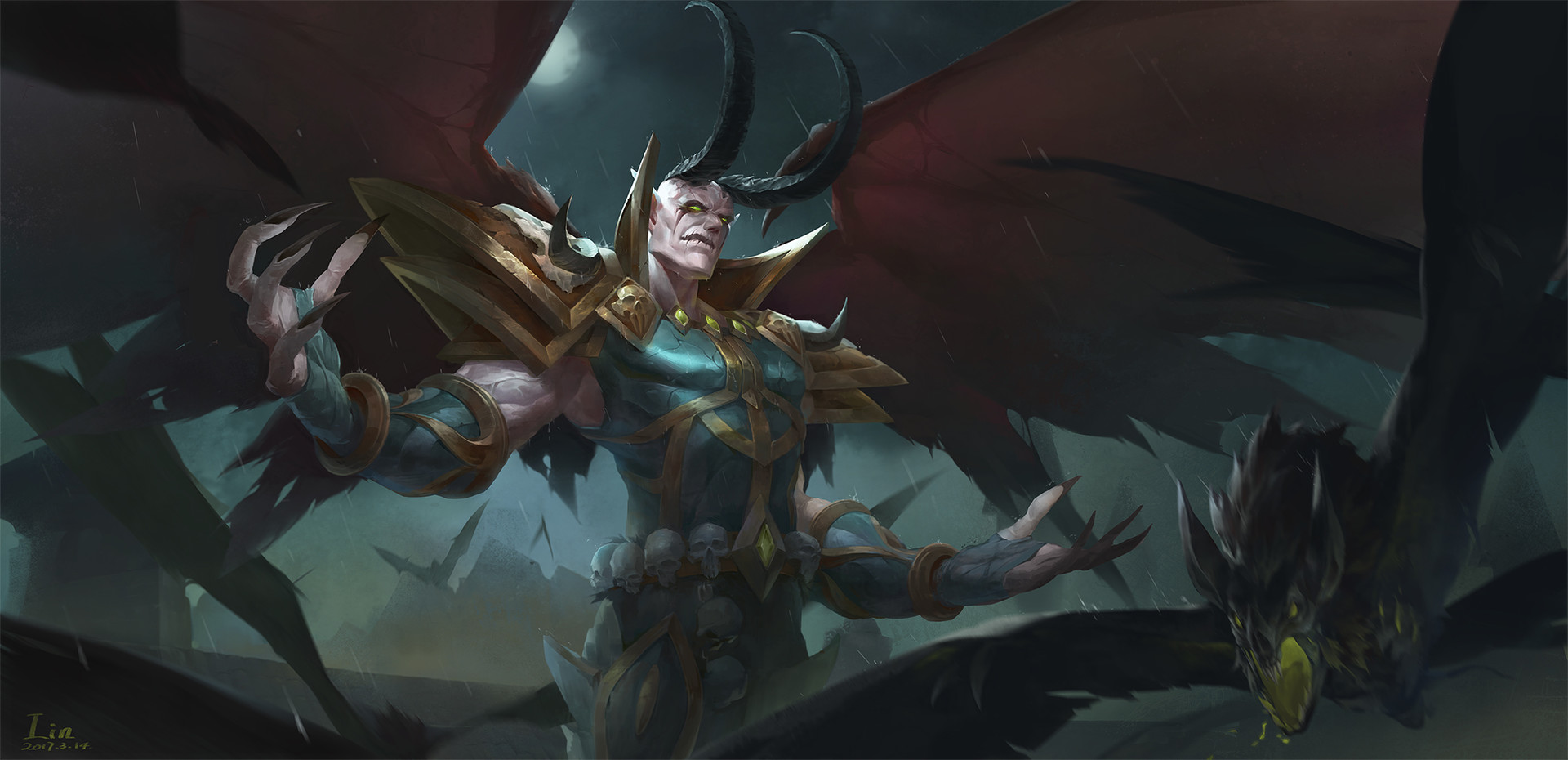
As it turned out, the Scourge infected all of the grain stored in Hearthglen, one of the most active Alliance trading posts, planning to turn the kingdom of Lordaeron into undead.
Despite their eventual victory against the Scourge at Hearthglen, both Uther and Arthas knew that the battle against the undead had just begun.
And yet again, although the time had called for tactical measures, the young Menethil was out for blood – Mal’Ganis’ blood. The nathrezim controlled the Scourge that threatened the lands of the Alliance, and Arthas thought that the dreadlord’s death would result in ultimate and utter victory against the Scourge, the Burning Legion, and everything standing against Lordaeron.
Uther knew that Arthas’ approach was driven by vengeance – but he still had to stay by his student in battle, not least because he gave his king a promise to protect the heir to the throne.
Prince Arthas

At last, Uther reached Stratholme, the city where Arthas thought Mal’Ganis would reside – but they both came too late. Mal’Ganis was gone, and parts of the townspeople had already been infected with the Plague of Undeath, the terrifying sickness that turned everyone and everything into a servant of the Scourge.
Arthas, in full despair, commanded his troops to purge the entire as a last attempt to stop the spread of the horrible infection. But Uther, his teacher, saw that a considerable part of the people of Stratholme – his people, Arthas’ people – were still not infected.
Lightbringer didn’t have the heart to follow his prince’s commands – and was promptly suspended from service by his former student.
In utter disbelief, Uther met with Terenas Menethil, Arthas’ father, and informed him about his morally questionable actions in Stratholme. They agreed that their precious prince was traumatized by the events around the battle for Hearthglen and awaited his return to further discuss the matter.
And Arthas returned. A few weeks later, the whole city of Lordaeron welcomed their heir to the throne with open arms. But Arthas had changed – and not for the good.
Uther was not present when Arthas, fully corrupted by the blade Frostmourne, committed regicide and patricide at the same time. That is why he swore to protect Terenas’ urn with his life, honoring the eternal remains of his king.
But Arthas was not done rewriting his past and attacked the city of Andorhal, where Uther and the urn resided. After Mal’Ganis’ death, another dreadlord called Tichondrius teamed up with the prince of Lordaeron, and asked for his father’s urn for “necromantic purposes” – and Arthas, in exchange for even more power and troops, agreed. All that concluded in a deadly battle between teacher and student – and Arthas won.
And what did Uther die for? The belief in the light? The unconditional love for his student? The last promise to his king?
In the end, Uther’s life is a story about inevitableness. The return of the orcs was inevitable, despite Uther’s continuous efforts during a total of THREE wars. The turning of Arthas Menethil was inevitable, despite his most sacred teachings. And last but not least, the death of Uther himself was inevitable. Betrayed and killed by his student, who turned out to become the next Lich King, Uther Lightbringer did everything he could to give the world as much of himself as he could.

If i remember correctly from the books was Turalyon to bring down Ogrim with its awakened powers of paladin (not yet manifested until then).
And you write “Mal’Ganis teamed up with the prince of Lordaeron, and asked for his father’s urn for “necromantic purposes”, but actually is the dreadlord Tichondrius, Malg’Ganis die in the last mission of the human campign of W3.
Re: Mal’Ganis — correct. He was long dead (only a setback in WoW!) by the time Prince Arthas killed Uther.
About Turalyon: That’s why I wrote “together with Turalyon” 🙂 This piece is about Uther after all, so I didn’t want to get into Turalyon’s story too much.
Re: Mal’Ganis: You’re absolutely right, thanks! This is definitely not the first time I mixed up MG and Tichondrius, not least because they look the absolute same in WC3 besides their armor colouring.